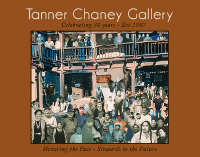KEWA PUEBLO
(SANTO DOMINGO PUEBLO)
INTRO
Nestled along the Rio Grande River, Kewa Pueblo (formerly known as Santo Domingo) gives the appearance of growing organically from the ground. Earth wanders through the labyrinth of sun-baked adobe homes, stacked and terraced like a honeycomb. The village harkens back to the homes of their ancestors, the architects of the great empire in Chaco Canyon and also the unfathomable cliff dwellings.
By 1350, the great Chaco cities lay empty, the residents having fled to mesas, caves, and eventually migrating and settling along the Rio Grande. They brought with them their skills as artisans, engineers, and traders. Perhaps nowhere is this legacy more apparent than in Santo Domingo.
HISTORY
From the beginning of time, when the ancient ones emerged through a badger hole, the people of Kewa had a purpose to fulfill. Iatik, the Mother of All, charged the Kewans to be the makers of jewelry for all the other clans. And so it has been for two millennia. From the ancestral home in Chaco Canyon, archaeologists found turquoise beads, inlaid shells and hand-rolled shell necklaces in the sandy floor of every room; each bead hand cut, hand drilled and hand polished.
Two thousand years later, the renowned heishi makers of Kewa continue the legacy, making by hand each bead, each inlaid shell, each stone or shell necklace.
The Kewan's also have an ancient history with the turquoise and shell that they use. The Pueblo has prehistoric ties to the ancient Cerrillos mines, fifteen miles from present-day Kewa. Jewelry made with Cerrillos turquoise was found at Chaco.
According to Pueblo legend, turquoise mines were the gift of Turquoise Woman. “He found Turquoise Lady where she had hidden herself deep in a cave at the bottom of the sea. And finally he was able to persuade her to come back to where she used to live in the Cerrillos Hills...”
Mines were the gift of Turquoise Woman. Shells were the gift of White Shell Woman. The Ancient Ones cut intricate mosaics of turquoise and fit these to shell, and it is these inlaid pieces on shell (in the forms of frogs, turtles, other animals) that are in museums, found within the ancient burials of important men and even women.
They also made necklaces of the hand ground shell, called heishi. The literal meaning of Heishi is “shell” and it specifically refers to pieces of shell which have been drilled and ground into beads and then strung into necklaces. More and more frequently, however, heishi has come to refer to handmade tiny beads made of any natural material.
The First Jewelry Makers
The origin of heishi is linked to the ancient history of the Kewans, the people most proficient in its making. Their ancestors traded for shells, ground them, combined the shell pieces with ground turquoise and other materials to create bracelets, necklaces and earrings. This is the oldest form of jewelry making in the Southwest, predating the introduction of metals.
The most commonly used materials today are seashells of all kinds, including dark and light olive shells, spiny oysters, mother of pearl, and melon shell. Coral and stones such as lapis, turquoise, jet, pipestone, and serpentine are also used.
With vulnerable fingers on either side of a whirring blade, the artist slices the raw material into small pieces. Next, small squares are bitten off with a hand tool such as a nipper. Using tweezers to hold the tiny squares and a dentist's carbide bur, the artist drills a small hole into the center of each square. The rough squares of stone are strung onto fine wire, and the process of grinding, shaping and smoothing begins.
The artist shapes the rough beads by moving the string again and again against a turning stone wheel, controlling the fineness and diameter of the beads with her hands. At this point, many beads will be lost: they chip or crack or fly off as the grinder catches a flaw or a burr. Each type of material must be ground separately.
With the string of material ready for sanding, the heishi is further shaped and smoothed with ever finer grades of sand paper. The string is then washed with clear water and put in the sun to air dry. Finally, the string of heishi is polished on a turning leather belt. The smooth, polished beads are now ready to be restrung off the wire into a finished piece of jewelry. This whole process can take two days to a week before the artist renders bits of shell and stone into a fine necklace.
The great city of Chaco—the ancestral home of the Kewans—was built of sandstone. Each piece chiselled to a tight fit, making a mosaic that reached sometimes five stories high. The doorways to all the rooms create more patterns, while at the same time taking you deep within a sacred place. The art of the Kewa Pueblo echoes that of their ancestors: engineers of stone, architects of beauty, guardians of tradition, and charged by their ancestors to bestow on us their unique and amazing visions in art.

